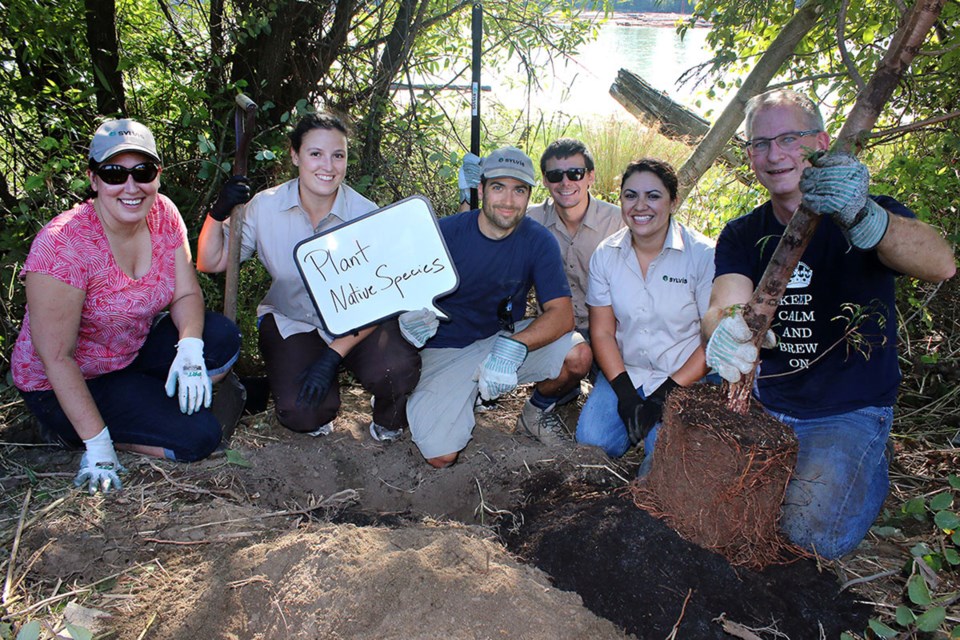A record number of volunteers collected mounds of garbage and invasive plants during the recent shoreline cleanup in Queensborough.
Karla Olson, a member of New Westminster Environmental Partners, reports that 118 volunteers took part in this year’s South Dyke Road shoreline cleanup on Sept. 21. Along with the cleanup and invasive plant pull that have always been a part of the shoreline cleanup, volunteers planted native shrubs at this year’s event.
“This is our fourth year at this site, and with 80 people coming out last year in the pouring rain, the thought was we could really make some significant improvements this year, especially since the weather couldn’t possibly be as challenging as last year – it wasn’t and participants did,” said Olson, site coordinator. “The results are visible and amazing!”
New Westminster Environmental Partners unveiled the results of its shoreline cleanup at RiverFest on Sept. 27. The cleanup is the kickoff event to B.C. Rivers Week celebrations in New Westminster.
Volunteers collected plenty of litter from the shoreline, including a hot water tank, four tires, a TV, a wheelbarrow, a hub cap, construction materials, fishing nets and ropes, plastic jugs, shoes, a life vest, an aerosol can, plastic flowers, a brick, buckets, a car battery and food related litter, such as beverage bottles and cans, a six-pack holder, grocery bags, plastic packaging and take-out containers. The number 1 littered item was cigarette butts.
Volunteers also removed a huge amount of invasive plants from the shoreline, including bamboo, English ivy, Himalayan blackberry, holly, Lamium, laurel and morning glory. When city crews came at the end of the day to collect the plants that had been pulled, Olson said they commented on the fact that the piles were bigger than in past years.
In addition to pulling invasive species, New Westminster Environmental Partners received funding from the City of New Westminster and Vancity to plant native shrubs, which helps the shoreline habitat.
“The timing was right to add this activity as part of work to remove invasive plants from the area,” Olson said. “Since this shoreline cleanup began in 2011, participants and NWEP members have been removing invasives. Adding native shrubs is one way to inhibit invasive plants from returning. And, doing this activity also gives us an opportunity to further care for this shoreline habitat by selecting shoreline plants that provide erosion control due to their root systems, that produce edible berries for people and animals, and that can create a special micro-habitat for butterflies, which we did, out of concern for their decreasing population.”
By the end of the day, volunteers had planted 18 species of native shrubs, 172 plants and three western red cedar trees.
According to New Westminster Environmental Partners, native shrubs including bitter cherry, black twinberry, Douglas fir, hardhack, Pacific ninebark, Pacific willow, red flowering currant, red huckleberry, red osier, salmonberry, Saskatoon serviceberry, snow berry, tall Oregon grape, thimble berry, western sword fern, vine maple, Western red cedar were planted to create the butterfly micro-habitat, along with a Pacific crabapple.
More photographs of the Queensborough Shoreline Cleanup can be seen at www.nwep.ca.



